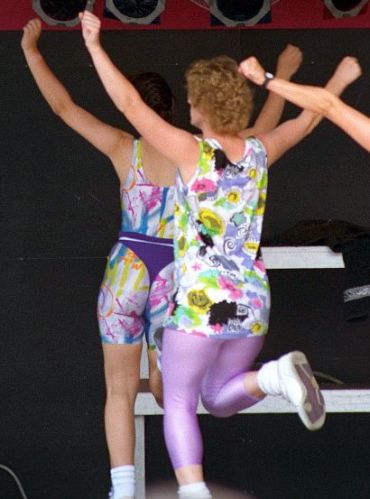Photographs: Courtesy Lifemojo.com
With the rising popularity of exercise, myths that are not based on any scientific rationale are also on the rise.
People today are becoming fitness freaks and are ready to explore several options to keep healthy. It seems as if they are on a continuous search for new, more advanced and beneficial regimes.
Unfortunately, what you hear is not always true. Here are some of the most popular myths pertaining to fitness:
1. 'No pain, no gain'
Pain is a warning sign that indicates any potential harm to the body. You should not feel any type of pain during or after exercise. If you feel pain, it means you are on the wrong track. One must be able to differentiate between pain and discomfort. When you begin a new exercise, an initial mild discomfort is normal and it is due to muscle soreness (DOMS).
Don't force your body to continue with a workout if you perceive any kind of pain. Remember, if there is pain there will be no gain. With a proper and planned exercise regime and a maintained exercise log, one can gain without pain.
2. Only frequent, hard workouts are truly effective
Photographs: Jewella C Miranda
This type of misconception is demotivating and it keeps a lot of people away from an exercise programme. But remember the old saying "something is better than nothing".
Research suggests that even a minimal level of physical activity can help you diminish the risk factors of cardiovascular diseases. So even if you do not have much time, opt for some physical activities.
3. No sweat, no results
Photographs: Mike Baird/Creative Commons
Often, people believe that sweating is related to hard work, but sweating is just the body's thermoregulatory mechanism to cool down and does not necessarily indicate exertion. One may sweat profusely at a certain intensity of exercise in summer and may not sweat at all with in winter!
It may be wrong to judge one's workout effectiveness on his/her degree of sweating. Also, there are individual variations and certain other determinants of the degree of sweating.
4. The more you exercise, the better the outcome
Photographs: Shameem Akthar
Excess of anything is harmful and so is exercise! To a certain extent, one may benefit by overtraining. But the same potentially increases your chances of getting injured. One must be aware of his/her potential and fitness levels. Exercises work on the principle of overloading and not overtraining.
5. Women ar not meant to weight-train
Photographs: Jewella C Miranda
Weight-training is an important component of exercise, which many woman fear. This is because of the common belief that lifting weights will make their muscles look masculine. But the fact is that women do not have sufficient testosterone to add to the bulkiness of their muscles. Weight training will strengthen and tone their muscles. The muscles will look lean, toned and tight.
6. Spot reduction is possible
Photographs: Rediff Archives
This myth has spread all over the fitness world like a forest fire. You may have come across a lot of exercise equipment like the ab cruncher etc in fitness centres. Training with these equipments through isolated exercise is believed to reduce your hips, thighs, abdomen etc.
Physiologically, it is impossible to isolate the body part and reduce the locally stored fat. Research has proved that fat mobilises equally during exercises from all areas of the body. Isolated exercises will help you to strengthen that particular body part and you may find a decrease in girth, as a result of increased muscle tone. But there is no loss of fat from that particular body part.
The best way to burn fat is to follow a well-planned exercise regime which includes both aerobic exercises and strength training. This will decrease the overall body fat.
7. Yoga is the safest workout
Photographs: Jahnavi Sheriff
Yoga is a vast term and it includes various exercises and postures. Some of the exercises are vigorous and physically demanding. Failing to adhere to the right practices may give rise to many problems.
One must be well aware of what to do and what not, because some of the postures in yoga can aggravate problems like back pain, cervical spondylosis, knee pain etc. You should abide by the instructions of a qualified instructor to facilitate safe workouts.
8. Joining a gym is important for weightloss
Photographs: Rediff Archives
It's a common feeling that you need to join fitness classes or go to the gym to lose weight but practically speaking, home-based fitness programmes have been proved to be equally effective in losing weight.
To lose weight, you need to burn calories, which can result from any physical activity, whether it is at the gym or at home. What matters is your consistency! Sticking to your fitness regime religiously is the key to success.
9. Age is a constraint
Photographs: Wikimedia Commons
Many old people feel that it's too late to start with exercise. But they can safely participate in exercise programmes. With regular exercise, one can lead an independent and healthy life. Along with that, there is a generalised sense of wellbeing and improved quality of life. In case you have any health-related problem, consult your physician. It is never too late to join a fitness programme!
Although people have become more aware about fitness, misconceptions still keep them from exercising. Some myths are harmless, but others have the potential to harm you. There is no point in believing things which are untrue and ineffective because with belief come various expectations.











Comment
article